Are you a journalist? Please sign up here for our press releases
Subscribe to our monthly newsletter:
The expression “it takes two to tango” takes on a peculiar twist in the context of the interaction between bacteria and their host’s immune system: Some immune cells, upon infection, turn from killing machines into physical niches for bacterial growth and prosperity. A new study by researchers from the Weizmann Institute of Science resolves this paradox, showing how this deadly tango comes about.
Dr. Roi Avraham of the Biological Regulation Department has focused in recent years on studying intracellular bacteria, such as Salmonella – notorious, in milder cases, for causing food poisoning and in more serious cases, for sepsis and death – and the ways in which these bacteria interact with their host’s immune system, mostly with cells known as macrophages. Macrophages are frontline immune cells whose job it is to intercept any invading agents that the body recognizes as foreign – from microbes to cancer cells, as well as the body’s own dead cells and cellular debris. They do so by “swallowing” the invaders whole, while releasing toxic substances aimed at killing them.

In the new study, led by Dotan Hoffman, a PhD student in Avraham’s group, the researchers infected mice with Salmonella, causing an acute disease, and proceeded to study how the deadly infection develops over time, focusing on the macrophage response in the early stages of infection. Sampling the mice’s spleen, where Salmonella are known to gather, over the course of 24 hours, they observed a clear-cut trend: During the first eight hours of infection, the bacterial load was steadily decreasing, suggesting that the macrophages were functioning properly and killing off the invaders. However, soon after the eight-hour mark, the bacterial population started to grow again – and not only grow, but thrive, leading to the animals’ death within days after they were infected.
The newly identified macrophages inadvertently offer bacteria an easily accessible all-you-can-eat buffet
Macrophages, found in essentially all tissues, take on various forms that differ from one another ever so slightly, making the various cell subsets hard to identify. Using an advanced genetic analysis method called single-cell RNA sequencing, Hoffman managed to distinguish not one but three different types of macrophage populations in the spleen of the infected mice. One of the three was a new cell type that was previously uncharacterized, and this population of macrophages increased over time. When comparing bacterial load in the three macrophage types, the researchers realized that the newfound type was a niche in which the bacteria end up replicating and thriving. They concluded that this cell type was responsible for the intriguing course of infection they had observed. “We had found the culprit,” says Hoffman, “Now we needed to understand why this was happening.”
Activated immune cells release oxidized compounds that are toxic to bacteria, but above certain levels, these compounds are toxic to the immune cells themselves, causing tissue damage. The researchers found that macrophages of the newly-found type are able to neutralize these oxidized molecules, apparently in order to protect themselves and possibly to exert damage control over the immune response. However, when these molecules are neutralized, they become a form of carbon that happens to be the preferred food of Salmonella and other intracellular bacteria. In other words, the newly identified macrophages inadvertently offer bacteria an easily accessible all-you-can-eat buffet. Indeed, mice that were unable to properly produce this type of macrophages were found to be more resistant to Salmonella infection.

“The subset of macrophages we have discovered probably serves to moderate the immune response, but the bacteria take advantage of this cell subset to get into the body through the back door,” Avraham says.
These findings pave the way for a deeper understanding of bacterial infection and open up new directions for research into survival strategies employed by bacteria other than Salmonella in various body tissues. “We have early indication that this subset of macrophages also exists in the lung and might be facilitating the survival of Mycobacterium tuberculosis bacteria,” says Avraham.
The discovery of the new type of macrophages may also help develop therapies that would consist of blocking this subset of cells or preventing them from maturing. Furthermore, since these macrophages seem to be involved in controlling the immune response, investigating their role in the severe immune reaction known as sepsis might advance the development of treatment options for this life-threatening condition.
The research team also included Yaara Tevet, Gili Rosenberg, Leia Vainman, Aryeh Solomon, Dr. Shelly Hen-Avivi and Dr. Noa Bossel Ben-Moshe of Weizmann’s Biological Regulation Department and Sebastien Trzebanski of the Immunology Department.

There are about 2,600 different Salmonella subspecies, yet clinically Salmonella can be categorized into just two main groups: typhoidal and non-typhoidal.
Dr. Roi Avraham is the incumbent of the Philip Harris and Gerald Ronson Career Development Chair.
Dr. Avraham's research is supported by the Sagol Weizmann-MIT Bridge Program and the WIS-Pasteur Program.